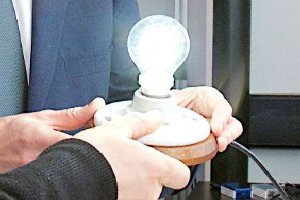The graphene lightbulb has been the subject of a huge amount of speculation over the past few days.
What is it?
The truth is, nobody outside University of Manchester spin-out Graphene Lighting knows, so ignore anything you have heard or read.
“As a scientist, I would love to say more, but for commercial reasons I can’t,” professor Colin Bailey told Electronics Weekly. He is a non-executive director at Graphene Lighting and deputy vice-chancellor of the University of Manchester. He did say it has conventional LEDs inside, and it uses “up to 10% less energy than a conventional [LED] light bulb”, due to some aspect of graphene, while he gave away nothing to suggest whether this aspect is thermal, electrical, mechanical, or something else.
He did say it has conventional LEDs inside, and it uses “up to 10% less energy than a conventional [LED] light bulb”, due to some aspect of graphene, while he gave away nothing to suggest whether this aspect is thermal, electrical, mechanical, or something else.
As the efficacy of LED lightbulbs varies over a huge range depending on the quality of the product and how hard the LEDs are driven, it is impossible to get ‘up to 10%’ into perspective – something Bailey acknowledges.
We will have to wait six-12 months to find out, while the company gets the bulb into production and its supply chain sorted.
Not made here
Despite his best efforts, manufacture will not be in the UK because no one was willing to put up the money, said Bailey. Instead, Quebec-based Industrial Alliance has invested and “our supply chain is across the globe, but final assembly for different markets has not been finalised”.
However, Bailey intends to keep related high-tech jobs in the UK.
The Canadian stock market is likely to handle any floatation of Graphene Lighting.
Actual graphene LEDs
While the lightbulb will not have graphene light emitters, such things do exist.
Another team from Manchester has demonstrated light emission from quantum wells within ‘van der Waals heterostructures’.
For more detail: What is the Graphene light bulb?
